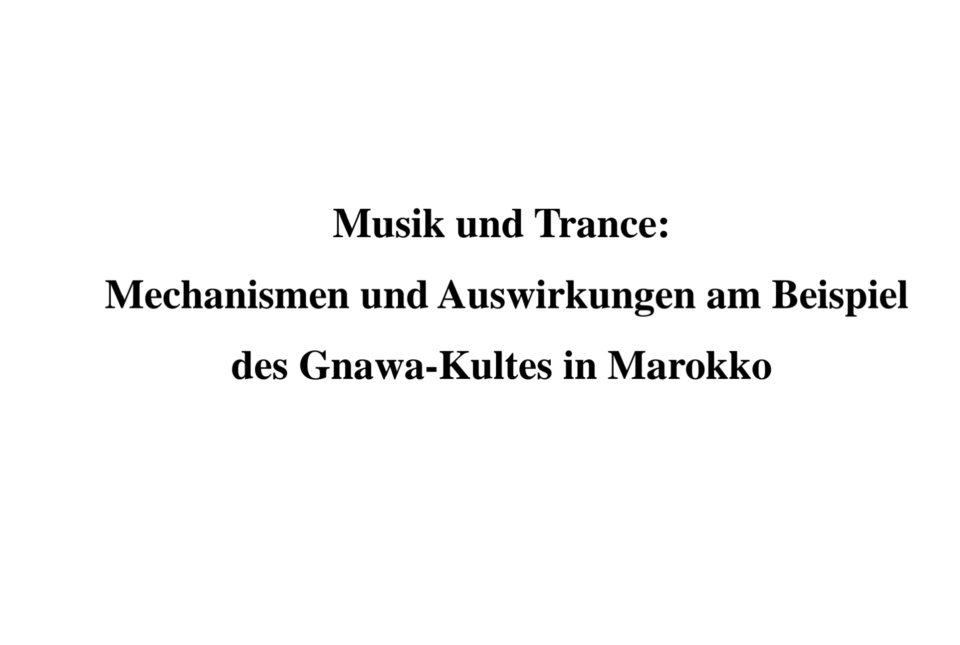
Music and Trance
Motivation
In 2010/11 I conducted a research on the question of the relationship between music and altered states of consciousness. The question arose because I wanted to understand what influence music can have on the state of trance in shamanistic healing rituals, in religious mysticism, meditation and in general dance practice. The research work took place independently under the supervision of Prof. Thomas Zoller and Prof. Michael Heinemann from the Carl Maria von Weber College of Music. During the research work, I also collaborated with the anthropologist Prof. Annette Drews, who supported my endeavor.
Documentary film: „Les 7 couleurs de l Univers“ with the French anthropologist Viviana Paques (2008)
Fieldwork and Research
I first conducted a detailed study in historical as well as cultural comparison of the phenomenon in general. After I travelled several times to Morocco to study the music and ritual practice of the Gnawa brotherhood and conducted field research. I chose the Gnawa because of their geographical proximity to Spain, where I used to live years before and because I felt emotionally deeply touched by their music, when I listened the first time their music in Madrid. In Morocco, moreover, the four practices I was interested in (healing, mysticism, meditation, dance) are practised vigorously by a wide variety of groups. Elements of each of these four areas of interest can be found in the Gnawaritual.
The following research questions were asked: What is trance/ecstasy? How does trance induction work, especially through music? What structures and patterns can be discerned in the Gnawa ritual, specific to the elements of condensation and increase in tempo?
Conclusion
I have come to the conclusion that not one element is responsible for trance induction, such as a certain frequency, but that the rituals are mostly synaesthetic experiences. I clarified some musicological models and the focus on structure in tempo increases was a novelty. My work was rewarded with the top grade 1.0.
The positive psychological effect is that the participants can release inner tensions through the trance and achieve a catharsis effect, which pacifies inner tensions for a certain time. My intention is to bring this knowledge closer to my fellow human beings by organizing workshops on ecstatic dance and trying to translate the knowledge into Western culture through my own musical-ritual practice.




